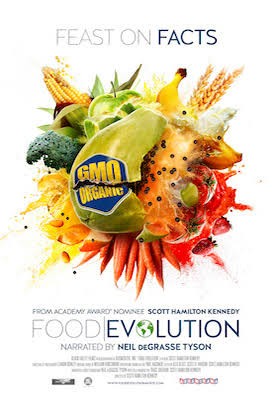A showing of the film “Food Evolution” generated a lively post-show discussion at the Loft Cinema on the evening of Sept. 5.
The film, which addresses the controversy surrounding the use of genetically modified organisms, or GMOs, drew a sold-out crowd according to the Loft Cinema. After the showing, three University of Arizona professors and a local farmer shared their perspectives about the film and about GMOs.
Kenneth Feldmann, a professor in the UA school of plant sciences, drew attention to what he called an often-overlooked point.
“If you plant Roundup-ready cotton, you’re going to have to use herbicide,” he said. “But a lot less-dangerous insecticides are used [instead].”
The difference is an important one, Feldmann said. Herbicides are used to control weeds and other unwanted plants. Pesticides and insecticides kill pests that harm crops. If the wrong one is used, it won’t be effective, but can still get into the surrounding environment.
RELATED: An exoskeleton built on passion
According to an article from the Aroian Lab at the University of Massachusetts Medical School, crops modified with the Bt gene (short for a bacterium called Bacillus thuringiensis) require less pesticide spraying because Bt kills pests.
The case for Bt cotton is clear in the eyes of Arnold Burruel, a farmer operating in Pima County.
“Before GMOs, we would spray our cotton crops up to 14 times a year to battle the pink bollworm,” Burruel said. “We haven’t sprayed our cotton in three or four years now.”
Burruel said he credits Monsanto, the manufacturer of Bt cotton, for saving the cotton industry in Arizona. However, the subject of GMOs is generally disputed between scientists and the public when it comes to safety, according to data from the Pew Research Center.
A 2015 Pew Research Center poll found that 57 percent of Americans think GMO foods are generally unsafe to eat compared to the 88 percent of scientists who believe GMO food is generally safe to eat.
Melanie Hingle, UA assistant professor in the school of nutritional sciences, stressed the importance of getting information to the public when there’s a disconnect between the science and the general opinion.
“We could do a better job of communicating science,” Hingle said.
Donato Romagnolo, also a UA professor in the school of nutritional sciences, pointed out that insulin was the first protein to be produced with recombinant DNA (rDNA) technology, which is genetic modification.
The ribosomal rDNA allows scientists to synthesize insulin in a lab by introducing a human insulin gene into a genetic information of common bacterium, according to the U.S. National Library of Medicine. The insulin-modified information, located in the plasmid, is placed back into the bacterium. When the bacterium ferments and multiplies, it begins to produce insulin.
“Before then, they had to use about two tons of pancreas, from pigs, to make eight ounces of purified insulin,” Romagnolo said. “The future is going forward, and not backwards.”
RELATED: Facing the facts: the advance of facial recognition software
According to USDA Economic Research Service data, as of this year 94 percent of all soybean crops and 92 percent of all corn crops grown in the U.S. are genetically modified. Monsanto controls a significant amount of the seed technology internationally, something Burruel raised a concern about.
“If somebody comes along with a good product, [Monsanto] will buy it,” Burruel said. “It’s all going to be under one roof anyway.”
A problem even GMOs might not be able to fix is water sourcing, even with plants engineered to resist hardships like drought.
“I still don’t know how we’re going to get good drought tolerance,” Feldmann said.
Another question raised by the after-film panel was about the viability of any food crop, GMO or otherwise, to feed a human population projected to be over 9 billion by 2050, according to the U.S. Census Bureau.
NaRayah Runyon, a sophomore in the college of agriculture and life sciences, attended the film and discussion and saw the issue on a wider plane. She emphasized the importance of awareness regarding the entire food industry.
“Food sourcing is something we don’t think about,” Runyon she said. “There’s a disconnect.”
Regardless of the perspective, the debate on GMOs shows no signs of slowing down.
Follow the Daily Wildcat on Twitter









